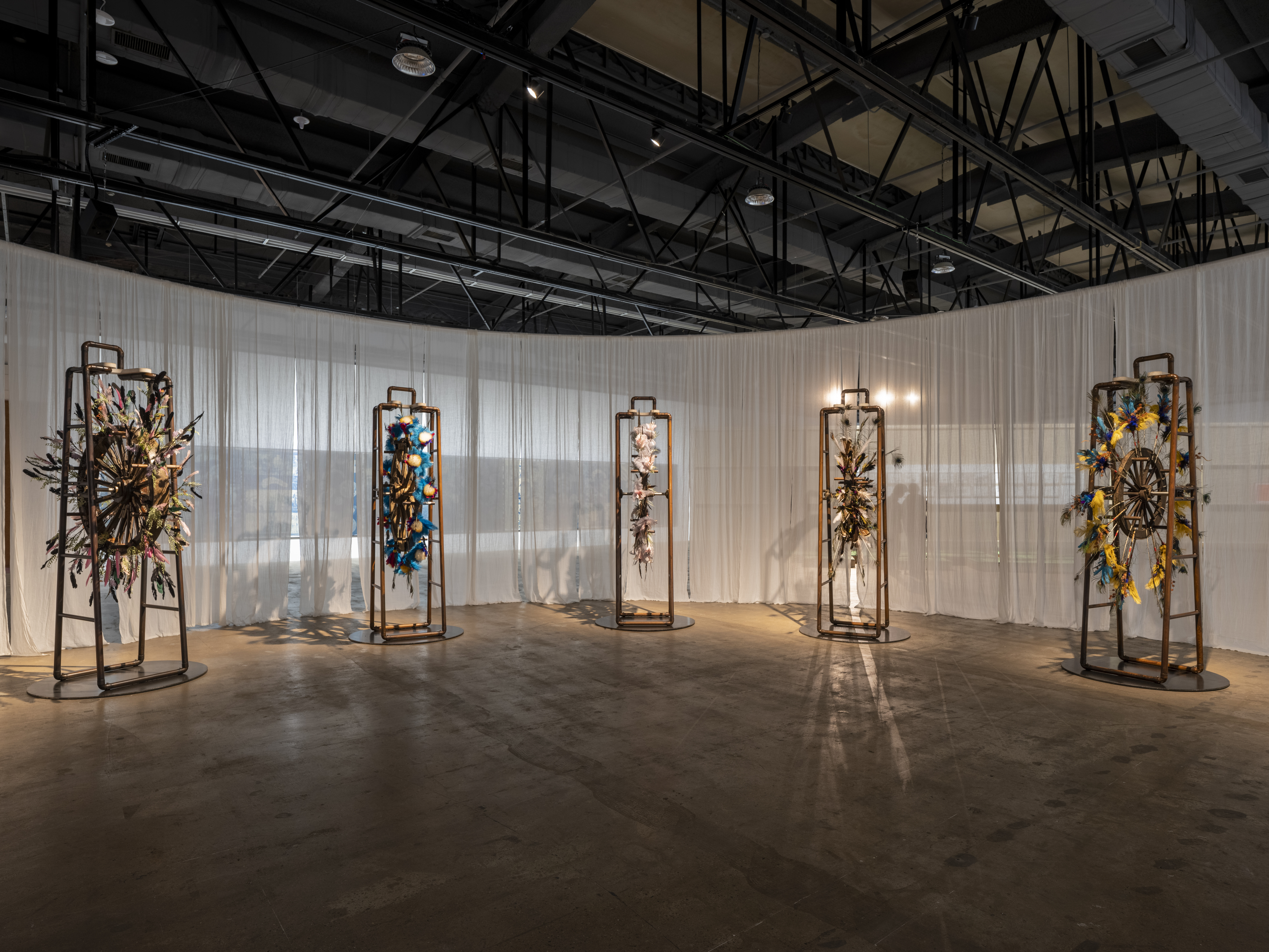Chang Jia
Born 1973 | Seoul
Lives and works Seoul
Chang Jia’s subject of interest is the socially banned, which she mainly expresses through the body. As part of the installation, twelve sculptural wheels are placed in a circular formation at the centre of the Biennale Hall’s exhibition gallery. Chang reinterpreted and reconstructed old wheels of 1950s carriages and trains by richly adorning them with feathers and flowers. Here the wheel, generally regarded as a tool for labour, is introduced as a ‘breaking wheel’, an instrument for torture used in the Middle Ages. In 2014, Chang presented the first version of this work, along with a performance in which twelve female performers ride the wheels while humming a grotesque combination of Didil Banga Taryeong (work songs from Eumseong, Chungbuk) and Phrygian scales that had been banned from use as religious music in medieval times. On the saddle of the wheeled structure, she attached crystals to express various words including ‘variable’, ‘elaborate’, ‘convict’, ‘bone’, ‘sweat’, ‘dark and hollow’, ‘ritual’, ‘insult’, ‘circulation’, ‘universe’, ‘followers’, and ‘twitch’. These leave embossed prints on the performers’ hips, functioning like a signature that shows that they take physical pain as pleasure or ecstasy. The twelve words closely related to the work Beautiful Instruments III reappear on the cyanotypes in which the letters are projected onto paper using light.
Chang Jia, Beautiful Instruments III (Breaking Wheel) 2014/2023. Mixed media installation composed of wooden structures. 12 pieces, 230×200×130cm each. Courtesy the artist, Supported by National Museum of Modern and Contemporary Art, Korea. Installation view, 14th Gwangju Biennale (2023). Image courtesy Gwangju Biennale Foundation. Photo: glimworkers
